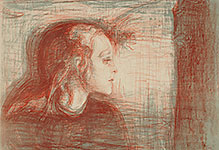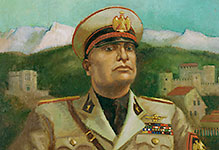
Portraits
Politicians and Statesmen, Painters' Portraits and Self-Portraits, Scientists, Rulers, Emperors and Kings, Musicians and Composers, Writers and Poets.

#33010928
Marie Marcotte de Sainte Marie, sister-in-law of Marcotte d'Argenteuil, one of...

#33010929
Mme. Louis-Francois Bertin, wife of the French publisher, sister of an art-criti...

#33010930
Selfportrit of the artist, 1835.Signed in pencil "Ingres a ses eleves" (to his s...

#33010946
Self-portrait,1892. Beardsley's style is an entirely original blend of English P...

#33010958
'Head of a Woman', 1520. Woman's face with closed eyes; the light falls down the...

#33010961
'Portrait of an English Woman', c1535. She is drawn in red and black chalk with...

#33010969
Hogarth painting the muse of comedy, 1764. A self-portrait of him seated before...

#33011024
Haniwa, Kofun period, Japan, 6th century. Her hair is swept up into an elaborate...

#33011030
Sugawara no Michizane in Chinese dress, Muromachi period, Japan, late 15th centu...

#33011032
Bodhidharma (Daruma), Momoyama period, Japan, late 16th century. Portraits of Da...

#33011054
Actor Ichikawa Danjuro VII as warrior Matsuomaru with axe

#33020313
Triumphal Arch ('Ehrenpforte') for Emperor Maximilian I. Dated 1515. Detail of 3...
